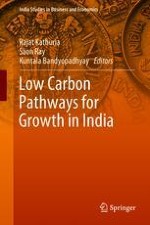2018 | OriginalPaper | Buchkapitel
8. Decarbonization of Indian Railways
verfasst von : T. S. Ramakrishnan
Erschienen in: Low Carbon Pathways for Growth in India
Verlag: Springer Singapore
Aktivieren Sie unsere intelligente Suche, um passende Fachinhalte oder Patente zu finden.
Wählen Sie Textabschnitte aus um mit Künstlicher Intelligenz passenden Patente zu finden. powered by
Markieren Sie Textabschnitte, um KI-gestützt weitere passende Inhalte zu finden. powered by
